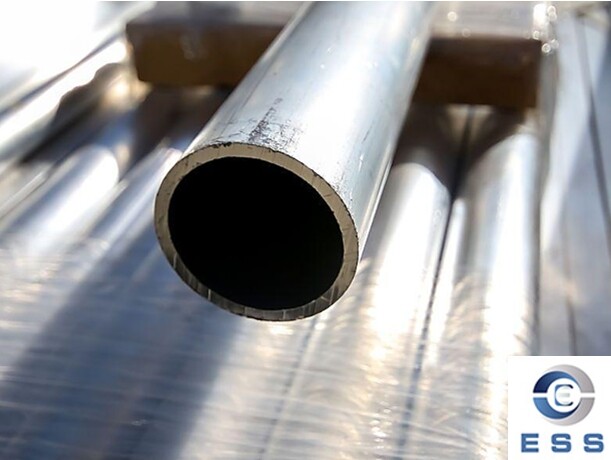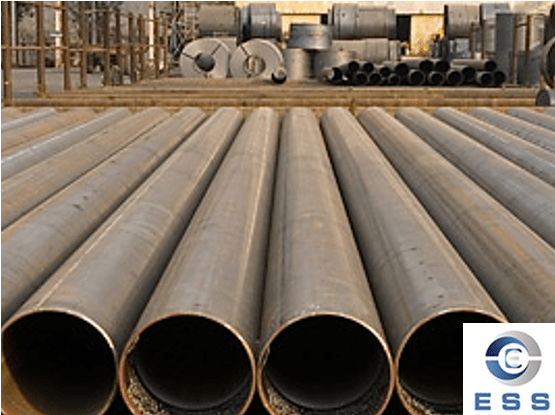
Stainless Steel Precision Tube Specification List
Stainless steel precision
tube is a seamless
pipe with high precision, high finish and high corrosion resistance, which
is widely used in machinery, electronics, aviation, aerospace, pharmaceutical,
food, chemical and other industries. Its main features include: high internal
and external surface finish, thin wall thickness, high diameter accuracy, high
tensile strength, good corrosion resistance, etc.
Specifications of stainless steel
precision tube
The following table shows the
specifications of common stainless steel precision tubes, including model,
size, parameters and other information.
|
Model
|
Outer diameter (mm)
|
Inner diameter (mm)
|
Wall thickness (mm)
|
Working pressure (Mpa)
|
|
TP304/304L
|
2.0-50.0
|
0.3-45.0
|
0.15-2.0
|
0-80
|
|
TP316/316L
|
2.0-50.0
|
0.3-45.0
|
0.15-2.0
|
0-80
|
|
TP321/321H
|
2.0-50.0
|
0.3-45.0
|
0.15-2.0
|
0-80
|
|
TP347/347H
|
2.0-50.0
|
0.3-45.0
|
0.15-2.0
|
0-80
|
|
S31803/S32205
|
2.0-50.0
|
0.3-45.0
|
0.15-2.0
|
0-80
|
|
S32750/S32760
|
2.0-50.0
|
0.3-45.0
|
0.15-2.0
|
0-80
|
|
00Cr17Ni14Mo2
|
2.0-50.0
|
0.3-45.0
|
0.15-2.0
|
0-80
|
|
00Cr19Ni11
|
2.0-50.0
|
0.3-45.0
|
0.15-2.0
|
0-80
|
|
00Cr19Ni13Mo3
|
2.0-50.0
|
0.3-45.0
|
0.15-2.0
|
0-80
|
|
00Cr25Ni22Mo2
|
2.0-50.0
|
0.5-45.0
|
0.25-2.0
|
0-80
|
Among them, TP stands for "ferritic
stainless steel material for pipelines" and S stands for "duplex
stainless steel material for offshore oil and gas production".
Specification selection guide
When selecting the appropriate stainless
steel precision tube specification, you need to consider multiple factors to
ensure that the selected specification can meet the needs of the actual
application. Here are some key selection points:
1. Clarify the application requirements
Working pressure: Determine the required
pipe wall thickness and strength based on the working pressure of the pipeline
system. High-pressure environments require thicker pipe walls and higher
strength.
Working temperature: Stainless steel
precision tubes are suitable for high-temperature environments, but the
appropriate specifications must be selected according to the specific working
temperature to ensure the mechanical properties and corrosion resistance of the
material at high temperatures.
Medium characteristics: Understand the
properties of the fluid in the pipeline, such as corrosiveness, viscosity,
temperature, etc., and select pipe specifications that can resist medium
erosion.
2. Consider the pipe size
Outer diameter: Select the appropriate
outer diameter based on flow requirements and pipeline layout. The larger the
outer diameter, the greater the flow, but the higher the cost.
Wall thickness: Wall thickness directly
affects the pressure bearing capacity and service life of the pipeline. The
wall thickness needs to be determined based on the working pressure,
temperature and medium characteristics.
Length: Develop the pipeline length
according to actual needs, reduce the number of joints, and improve system
reliability.
3. Reference standards and specifications
National standards: Refer to relevant
national standards, such as GB/T, to ensure that the selected specifications
meet industry requirements.
Industry standards: Some specific
industries may have more stringent standards, which need to be selected
according to specific industry specifications.
Manufacturer recommendations: Consult
manufacturers or suppliers to obtain specification recommendations and
technical support for specific applications.
4. Comprehensive evaluation and selection
Cost-effectiveness: Consider cost factors
and select cost-effective specifications while meeting performance
requirements.
Processability: Select pipe specifications
that are easy to cut, bend and weld according to processing requirements.
Corrosion resistance: Stainless steel
itself has good corrosion resistance, but the corrosion resistance of different
specifications in specific media may vary, and needs to be selected according
to the characteristics of the media.
Summary
The specifications of stainless steel
precision tubes of different materials may vary, and the specific selection
should be based on actual needs. The above table is for reference only, and the
specific selection should be based on the product catalog or technical
parameters provided by the manufacturer.
Read more: What Are The Classifications of Stainless Steel Precision Tubes? or What Is A Stainless Steel Precision Tube?













 Eastern Steel Manufacturing Co.,Ltd not only improve product production and sales services, but also provide additional value-added services. As long as you need, we can complete your specific needs together.
Eastern Steel Manufacturing Co.,Ltd not only improve product production and sales services, but also provide additional value-added services. As long as you need, we can complete your specific needs together.










